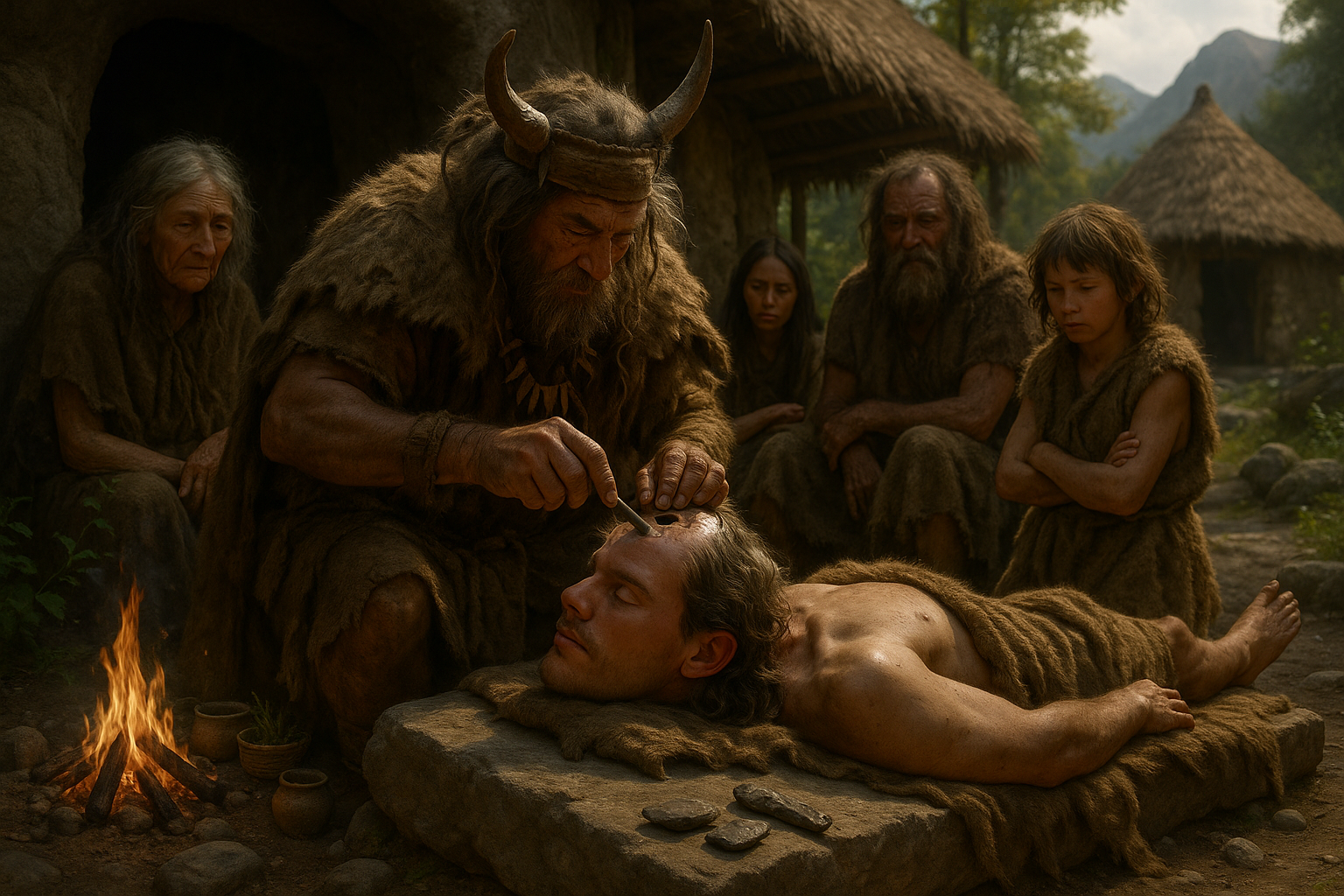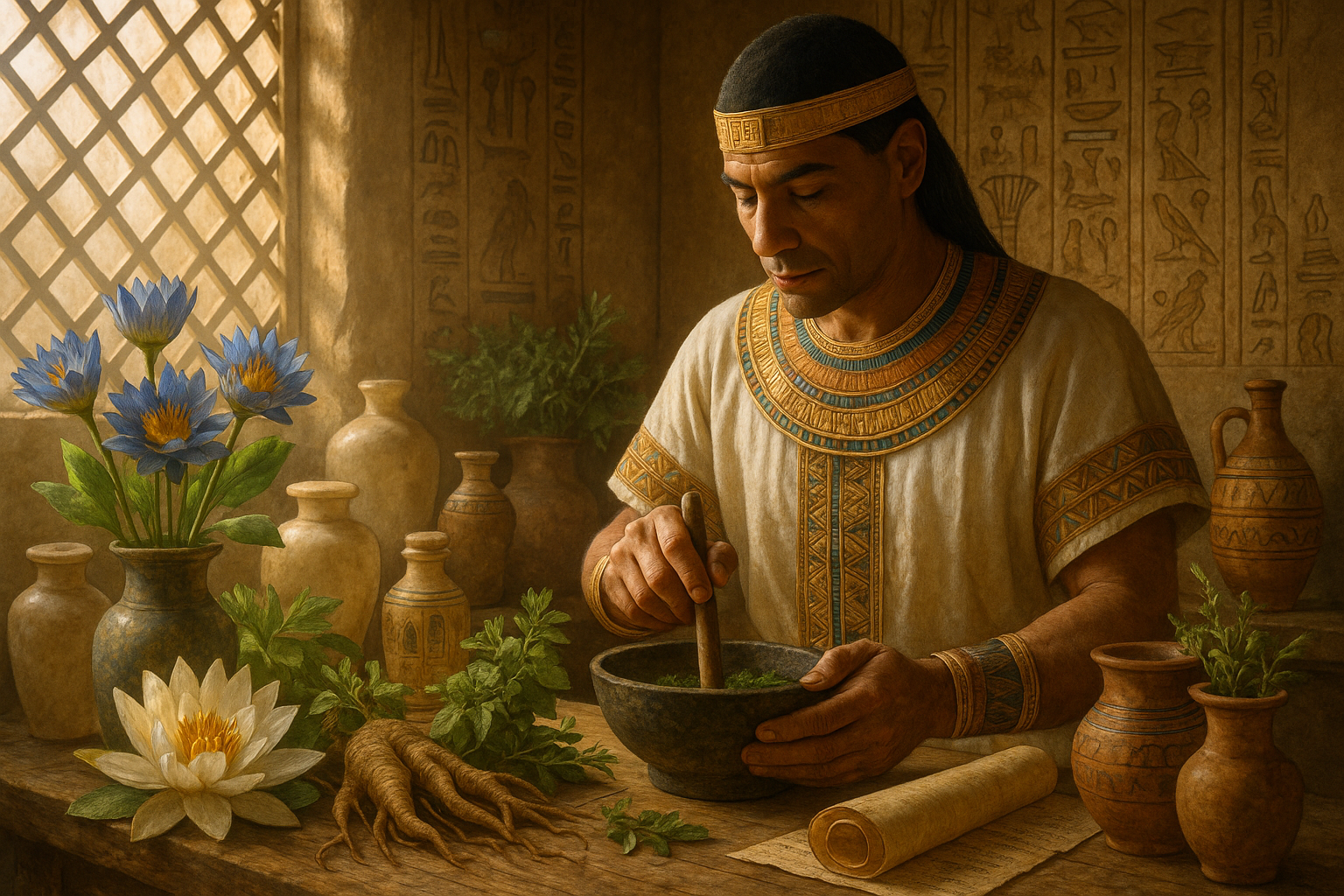In the dim corridors of human history, certain practices stand out as both mystifying and intriguing, offering us glimpses into the lives and beliefs of our ancestors. One such enigmatic procedure is trepanation, a form of cranial surgery that has been performed across various cultures and epochs. 🌍🧠 While the idea of drilling or scraping a hole into the human skull might make modern readers wince, it was once a widely accepted medical and spiritual intervention. What drove prehistoric societies to engage in such a drastic act? Was it the desperation of medical necessity, a ritualistic rite, or something else entirely? Join us as we delve deep into the ancient practice of trepanation, unraveling its mysteries and exploring its implications on our understanding of early medicine and cultural practices.
The earliest evidence of trepanation dates back thousands of years, with archaeological finds revealing skulls bearing the unmistakable signs of this procedure. From the jungles of Peru to the highlands of Europe, trepanation has left its mark on human history. But what factors could have motivated these ancient communities to develop such a sophisticated and, by modern standards, invasive medical practice? This question forms the cornerstone of our exploration, guiding us through a journey that traverses continents and centuries.
As we embark on this fascinating exploration, we’ll examine the archaeological evidence that sheds light on the prevalence and techniques of trepanation. With each excavated skull, scientists gain a clearer picture of how widespread this practice was and the various methods employed to carry it out. The survival rates and the apparent healing in many trepanned skulls suggest a level of medical knowledge and skill that challenges our assumptions about prehistoric peoples.
We’ll also delve into the possible reasons behind trepanation. Was it primarily a medical intervention, perhaps to relieve pressure from head injuries or to treat conditions such as epilepsy? Or did it serve a more ceremonial or spiritual purpose, a way to expel malevolent spirits or gain a direct line to the divine? The motivations for trepanation were likely as diverse as the cultures that practiced it, and understanding these motivations offers us a deeper insight into the worldview and priorities of ancient societies.
Furthermore, this journey into the past isn’t just about understanding ancient practices; it’s also about reflecting on the evolution of medical science. Trepanation offers a unique lens through which to view the progress and adaptation of surgical techniques over the millennia. By comparing ancient methods with contemporary neurosurgery, we can appreciate the advancements in technology and knowledge that have transformed cranial surgery into the precise and safe medical procedure it is today.
Moreover, we’ll investigate the cultural significance of trepanation, exploring how it intersected with art, religion, and societal norms. 🏺 The procedure has been immortalized in various artifacts and artworks, offering clues to its role and importance in different communities. As we piece together these fragments of the past, we’ll paint a picture of how trepanation was perceived and valued across different cultures and times.
This exploration wouldn’t be complete without considering the ethical and philosophical questions that trepanation raises. The procedure challenges us to reflect on the lengths to which humans will go in the pursuit of healing, understanding, and spiritual fulfillment. It prompts us to consider the boundaries between science and superstition, medicine and ritual, questioning where one ends and the other begins.
As we peel back the layers of history, we’ll encounter the stories of individuals who underwent trepanation, their lives echoing through time as testaments to human resilience and curiosity. These personal narratives, though often lost to the ages, provide a poignant reminder of the human element behind the archaeological evidence.
So, prepare yourself for a captivating journey into the depths of history, as we unearth the ancient practice of trepanation. Through examining the evidence, motivations, and implications of this intriguing practice, we’ll not only gain insights into the past but also enrich our understanding of the human condition. Let’s embark on this voyage together, opening our minds to the wonders and wisdom of those who walked the earth long before us.

Conclusion: Unearthing the Legacy of Trepanation
The exploration of trepanation—a remarkable surgical practice dating back to prehistoric times—unveils a fascinating intersection of medicine, culture, and human resilience. Throughout this article, we’ve delved into the historical significance of trepanation, examining its origins, methodologies, and the diverse cultural contexts in which it was practiced. From the ancient healers of Peru to the tribes of Africa and the medical practitioners in ancient Greece, trepanation has transcended geographical and temporal boundaries, highlighting the universal quest for healing and understanding the human body.
One of the key insights we’ve garnered is the sheer ingenuity and courage of early humans who, with limited tools and knowledge, embarked on this intricate form of cranial surgery. Their success rates, inferred from archaeological findings, suggest a sophisticated understanding of anatomy and a profound belief in the therapeutic benefits of this procedure. These ancient surgeons were pioneers of their time, laying the groundwork for modern neurosurgery and challenging us to appreciate the depth of prehistoric medical practices. 🧠
Equally compelling is the cultural dimension of trepanation. It wasn’t merely a medical procedure but often intertwined with spiritual and ritualistic elements. The varied reasons for its practice—ranging from treating head injuries and neurological conditions to releasing evil spirits—offer a window into the values and beliefs of ancient societies. This cultural tapestry adds a rich layer to our understanding of human history, emphasizing the interconnectedness of mind, body, and spirit.
In today’s world, where medical advancements have reached unprecedented heights, reflecting on practices like trepanation serves as a humbling reminder of our roots. It underscores the evolution of medical knowledge and the enduring human spirit that drives innovation and exploration. As we continue to push the boundaries of what is possible in medicine, let us not forget the lessons from our past. They remind us of the importance of empathy, respect for diverse healing traditions, and the relentless pursuit of knowledge.
The study of trepanation is not just about looking back; it is an invitation to reflect on how far we’ve come and to inspire future explorations into the unknown. 🌍✨
We encourage you, our readers, to share your thoughts on this topic. How does the practice of trepanation resonate with you in the context of modern medicine? Do you see parallels between ancient and contemporary medical practices? Join the conversation in the comments below and share this article with those who might find this historical journey as captivating as you did.
For further reading and exploration into the fascinating world of ancient medical practices, consider visiting the following resources: Archaeology News and NCBI – Trepanation in Ancient Cultures. These sources provide additional insights and research that complement the discussions we’ve had here.
Thank you for joining us on this journey through time, as we unearthed the ancient practice of trepanation. May it inspire you to delve deeper into the rich tapestry of human history and innovation.
### Expansion Tips:
1. **Archaeological Discoveries**: Expand on specific archaeological sites where trepanation evidence was found, detailing the significance of these discoveries.
2. **Modern Parallels**: Draw parallels between ancient practices and modern neurosurgery, highlighting advancements that trace their origins to trepanation.
3. **Cultural Implications**: Dive deeper into how different cultures viewed trepanation, perhaps adding quotes or perspectives from historical texts.
4. **Medical Evolution**: Discuss the evolution of medical tools and techniques from trepanation to present-day surgeries, emphasizing technological progress.
5. **Interviews and Expert Opinions**: Incorporate insights from historians or medical professionals on the impact of trepanation on contemporary practices.
By elaborating on these points, you can create a comprehensive and engaging conclusion.




